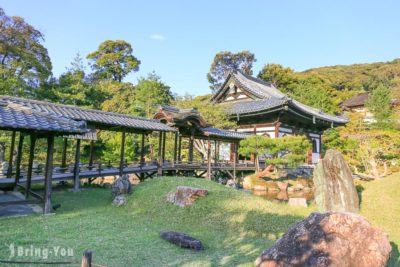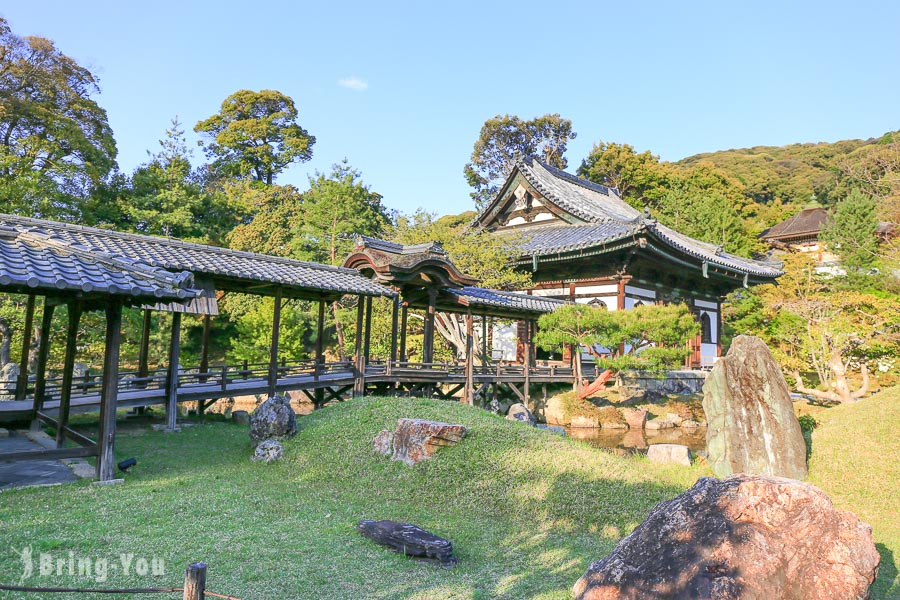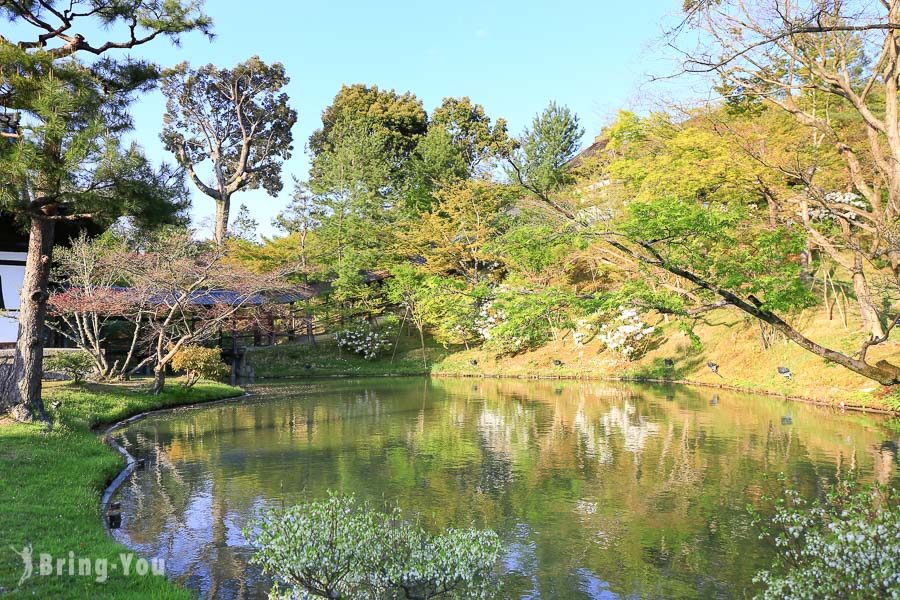
There are so many temples and shrines in Kyoto, and everyone has their own ideal spot. The backdrop of Kodai-ji Temple is a lush green mountain, and its Japanese-style garden looks elegant and beautiful. Most importantly, there are very few tourists here, with only a few groups of Japanese and Korean visitors in the entire temple. Spending a few dozen minutes in Kodai-ji Temple feels like having the whole place to yourself, allowing you to quietly experience the feeling of seclusion that Ningning had when she lived here. Compared to the more magnificent buildings and interesting attractions that are crowded with tourists taking photos, such as Fushimi Inari Taisha and Kiyomizu-dera Temple, the tranquility of Kodai-ji Temple is more in line with Piaor’s ideal image of Kyoto.
【Transportation】How to get to Ginkakuji Temple?
- Address: 526 Shimogawara-cho, Higashiyama-ku, Kyoto City, Kyoto Prefecture
- Admission: 600 yen (special admission fee of 600 yen during spring and autumn seasons) (Kodai-ji Temple and Kodai-ji Shoin Art Museum)
- Opening hours: 9:00~17:00 (until 21:30 during illumination season)
- Access: 5-minute walk from Kyoto City Bus “Higashiyama Yasui” or “Gion” bus stop
- Kodai-ji Temple Official Website
Gaotai Temple is located near Kiyomizu Temple, and two recommended attractions can be visited together.
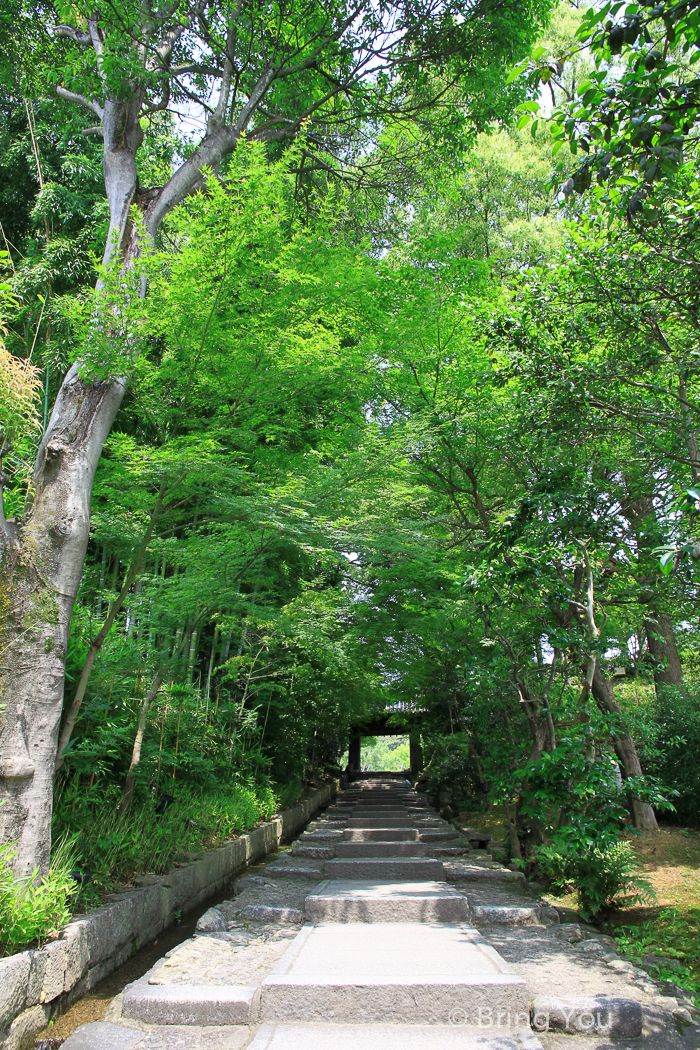
▲ As you climb the stairs to enter Kiyomizu-dera, the green trees on either side bow towards the center to welcome visitors. Even before reaching the entrance, you can already feel a sense of inner peace.
Introduction to Ginkaku-ji Temple: The Story of Toyotomi Hideyoshi’s First Wife, Nene
Gao Tai Temple was built in 1606 by Ning Ning, the wife of Toyotomi Hideyoshi, with the support of Tokugawa Ieyasu after the collapse of the Toyotomi regime following Hideyoshi’s death. It was also Ning Ning’s residence in her later years and her burial place after her death.
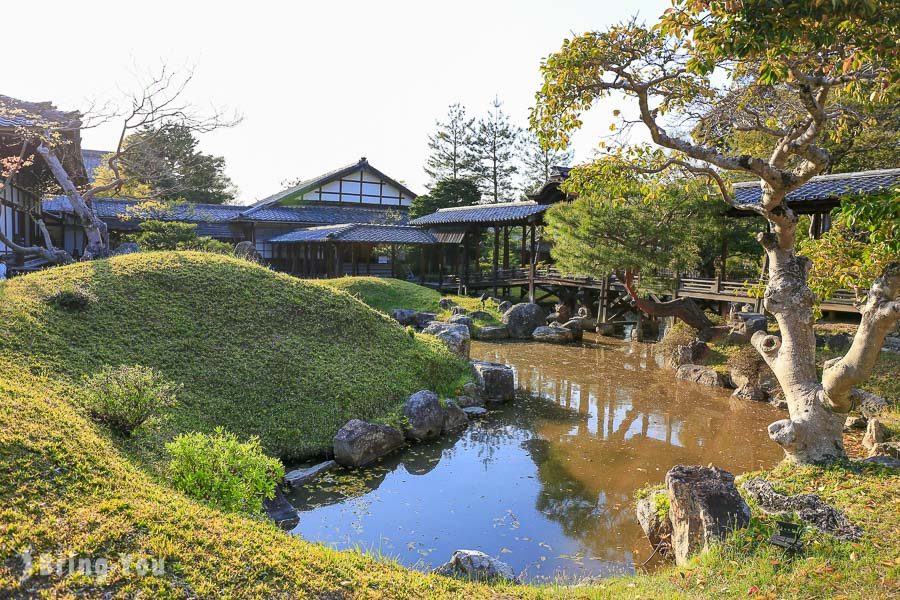
Visiting Kōdai-ji Temple is like watching a story about Ning Ning and Hideyoshi. In the chaotic Warring States period, Ning Ning was the adopted daughter of the Ashikaga family, a low-ranking samurai family in Owari Province. She was supposed to marry a samurai from a suitable family, but she refused and married Kinoshita Tokichiro, a retainer of Oda Nobunaga. Tokichiro, who was seen as a monkey by his relatives (he is always portrayed as a monkey in TV dramas), gradually rose through the ranks and eventually unified the country.
From this time on, Hideyoshi began to show his true colors as a man and took many concubines. Of course, Ning Ning, his legal wife, was very unhappy about this, but as she had not given birth to any children, she could not say much. Twenty-one years after their marriage, Oda Nobunaga passed away (he was betrayed! A mystery in Japanese history!), and Toyotomi Hideyoshi became the successor leader. As a commoner, he took on the position of regent for the emperor, and Ning Ning became Japan’s first lady, known as “Kita no Mandokoro.” Although “Kita no Mandokoro” was originally a title for the wife of the regent, after Ning Ning, it became her exclusive name.
However, Ning Ning faced a great threat from Tea Tea, who was a stunning beauty and a concubine that constantly threatened Ning Ning’s position. Tea Tea also gave birth to “Toyotomi Hideyori,” the heir to the world, and became his mother. In order to ensure that Toyotomi Hideyori would inherit the throne, Tea Tea entered Osaka Castle after Hideyoshi’s death, but ultimately committed suicide there. In comparison, Ning Ning, who spent her remaining years in “Kitashirakawa,” after Hideyoshi fell ill, seemed to have a better old age.
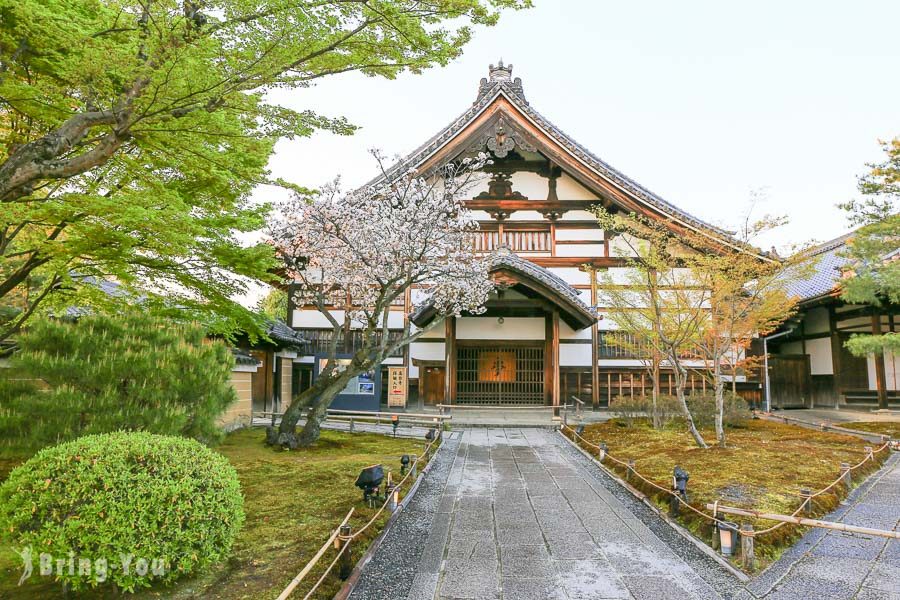
However, Ginkaku-ji Temple has been burned down several times, and now only the founder’s hall, spirit house, umbrella pavilion, shigure-tei, front gate, moon viewing platform, fangli, and Yunju-an remain. The best view of Ginkaku-ji Temple is at night. If you come to see the cherry blossoms in spring or the autumn leaves in autumn, Ginkaku-ji Temple is one of the must-see sights in Kyoto!
Kaishan Hall
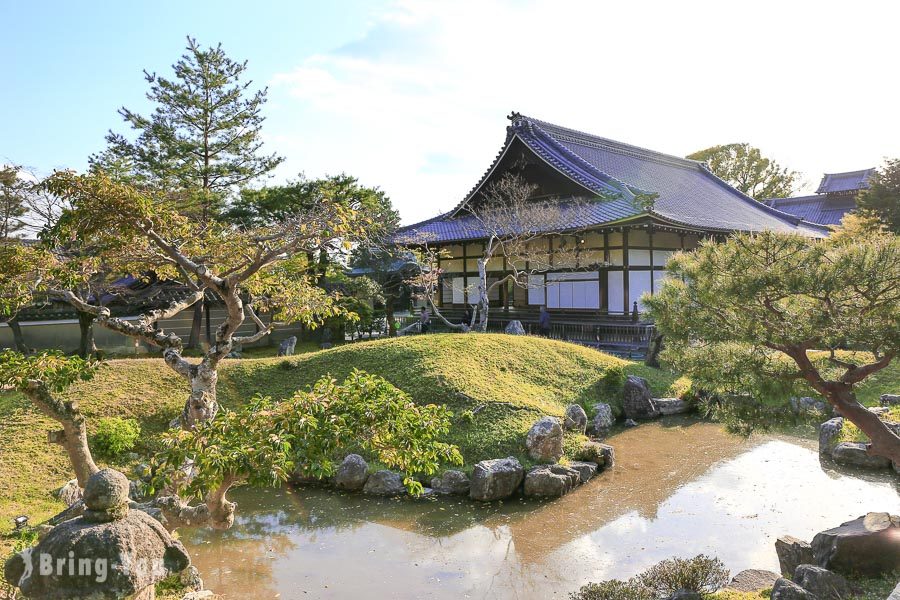
Arriving at Kaishan Hall is also the best place to enjoy the scenery of Gao Tai Temple. Sitting quietly here, you can enjoy the beauty of the garden outside, which is like taking a spiritual journey to Kyoto.
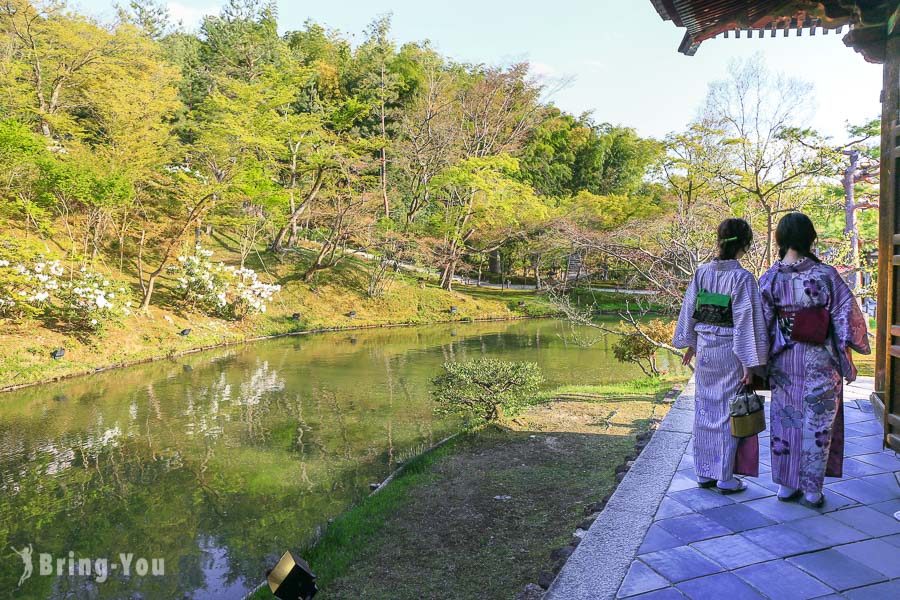
The garden landscape of Ginkaku-ji Temple is very similar to the elegant and classical Suzhou gardens, which I really like. (Especially without the terrifying crowds of people shouting like in Chinese Suzhou gardens, making it a particularly leisurely stroll.)
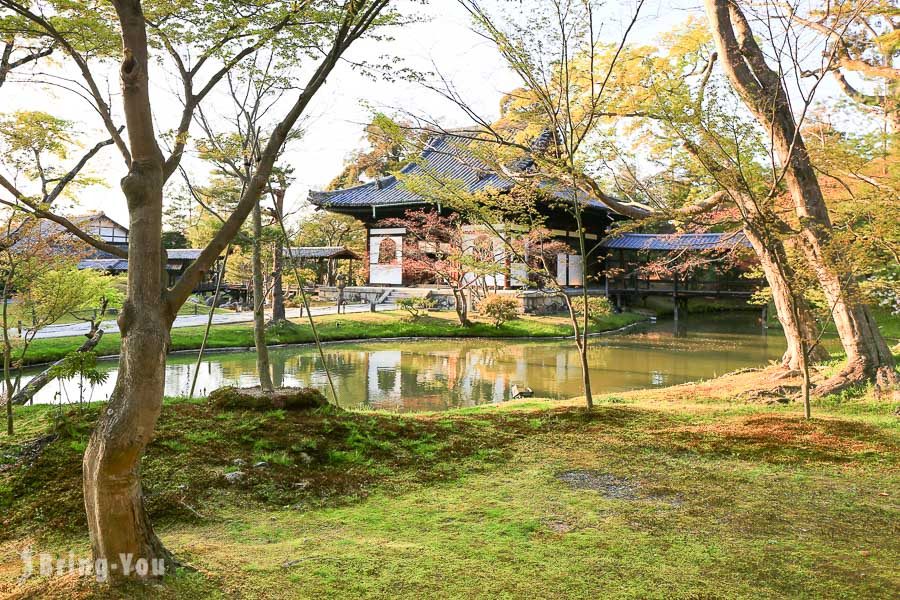
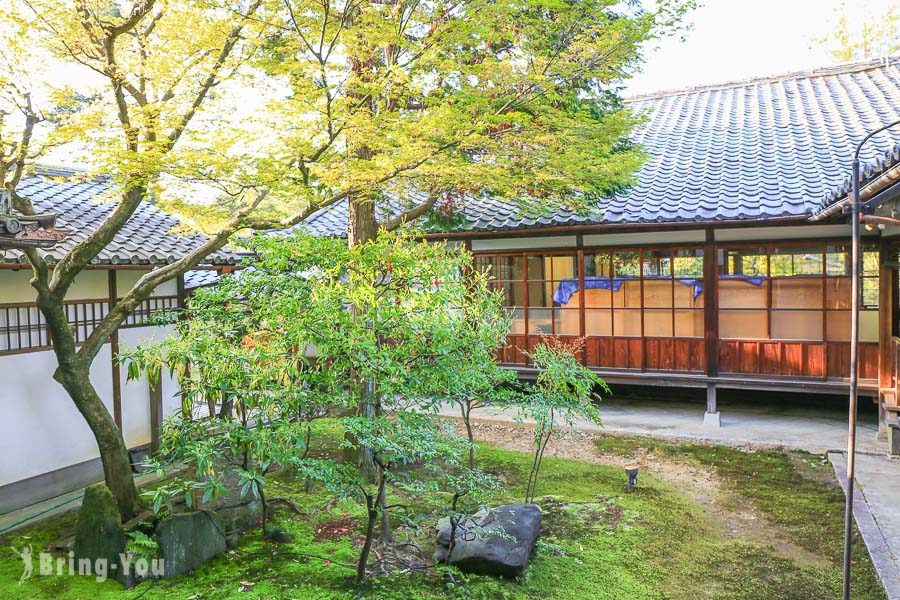
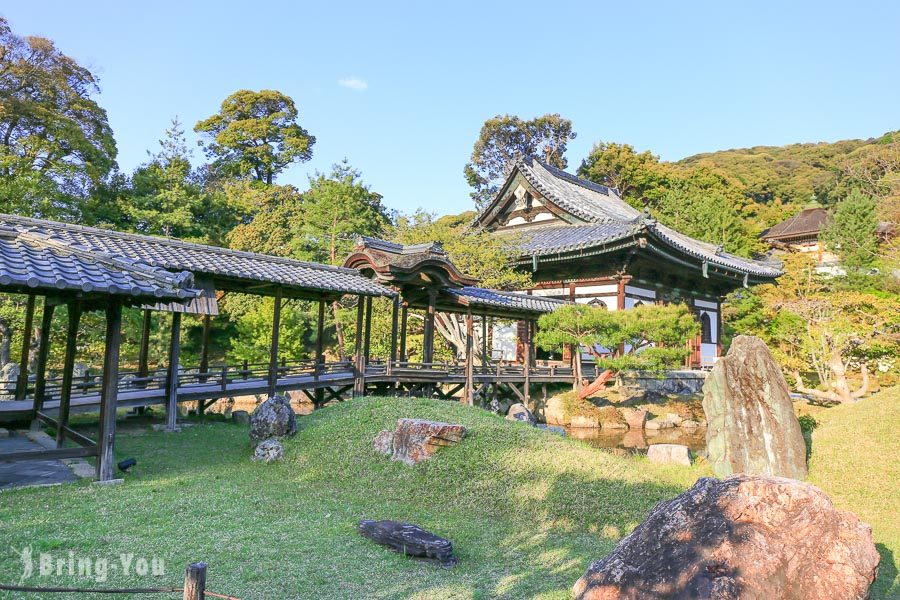
Fangzheng Garden
The “Hart Pond Garden” at Ginkakuji Temple also has a feeling of a silver sand beach, just like Ginkakuji Temple. Although the small garden composed of sand and sand patterns is not very spectacular, it has a unique and elegant feeling.
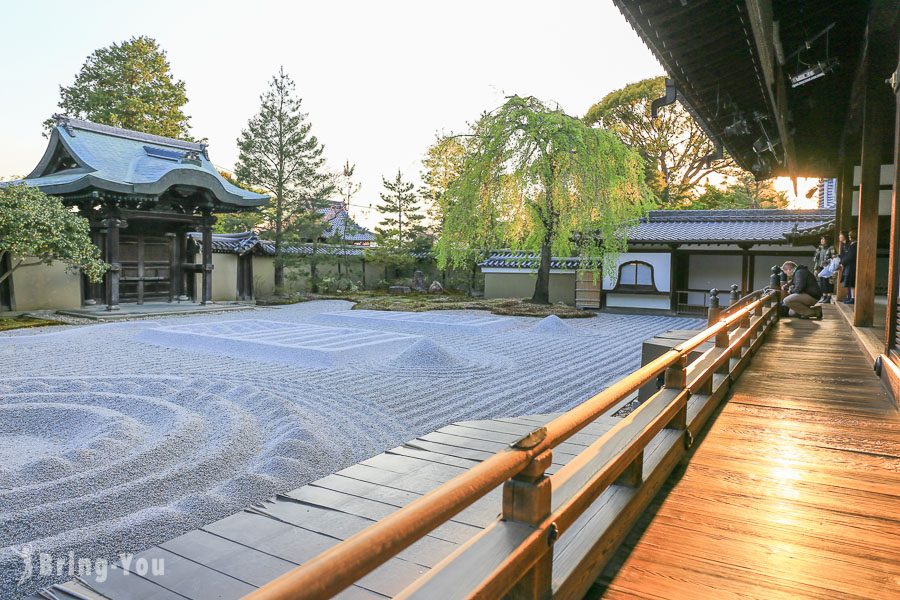
There are also cherry blossoms to see at Ginkaku-ji Temple. There are very few cherry blossoms in the temple grounds, and the main one is the weeping cherry tree in the corner of the abbot’s garden. When we visited on April 11th, it had already lost all its petals, which was a bit of a shame.
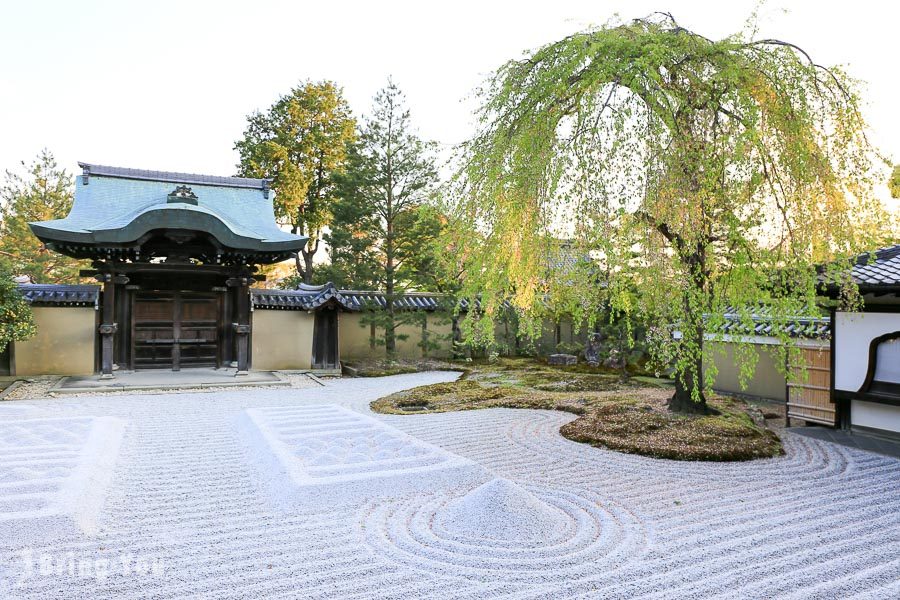
However, watching cherry blossoms falling in person is still very romantic.
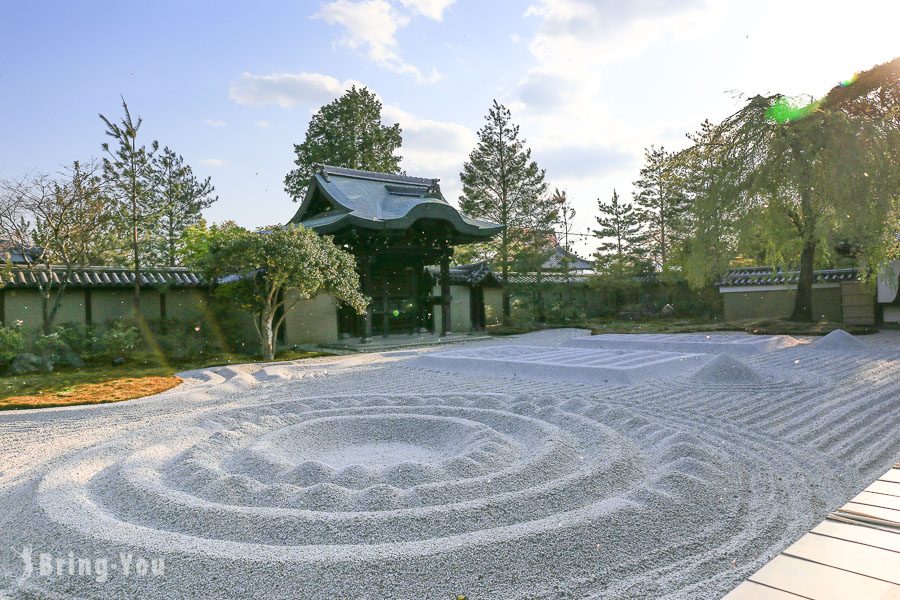
Wolong Corridor
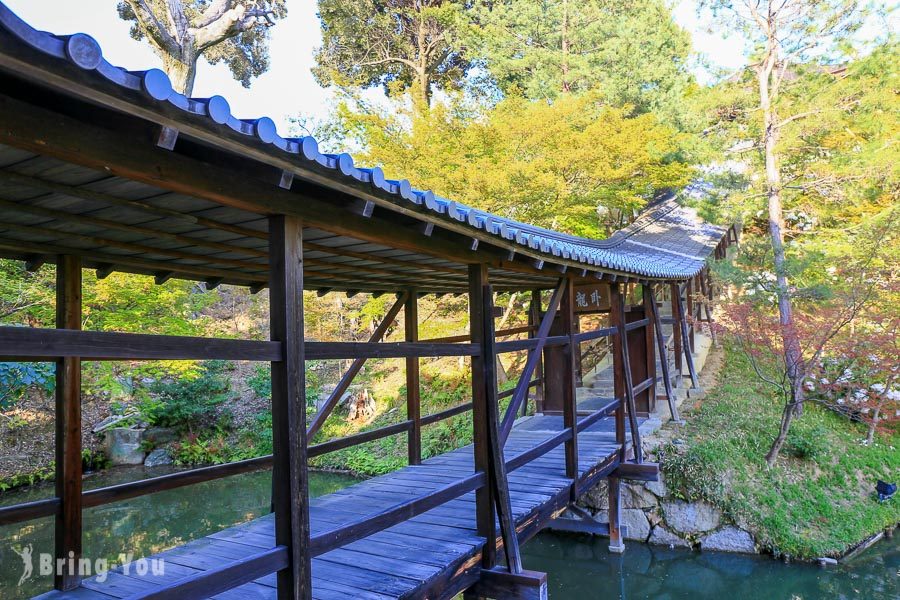
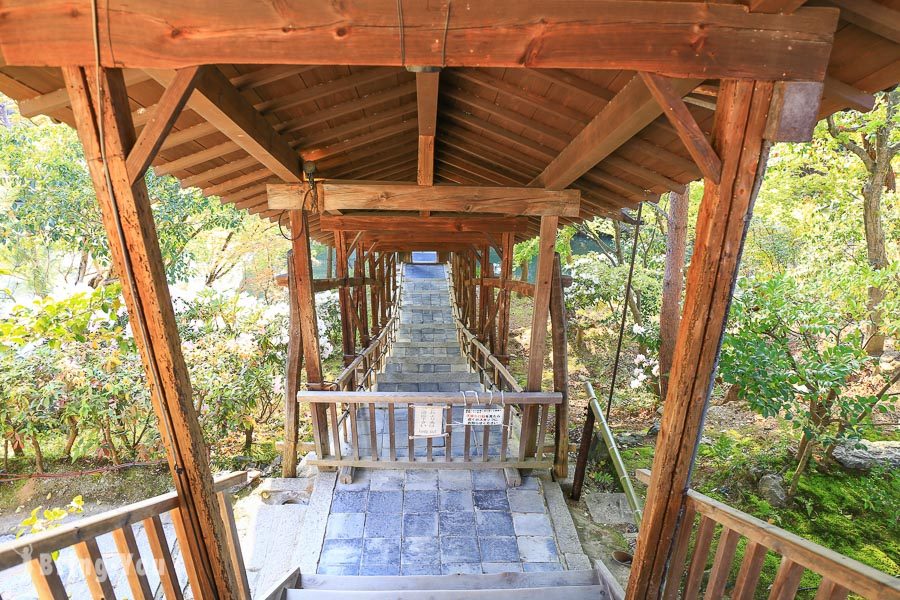
Spirit House
The spirit house enshrines the wooden statues of Toyotomi Hideyoshi and his wife, Lady North. There is a Japanese guide here who enthusiastically introduces visitors to the story of Ningning. She also works hard to tell the story of Ningning and Toyotomi Hideyoshi in English to foreign tourists like Piaor.
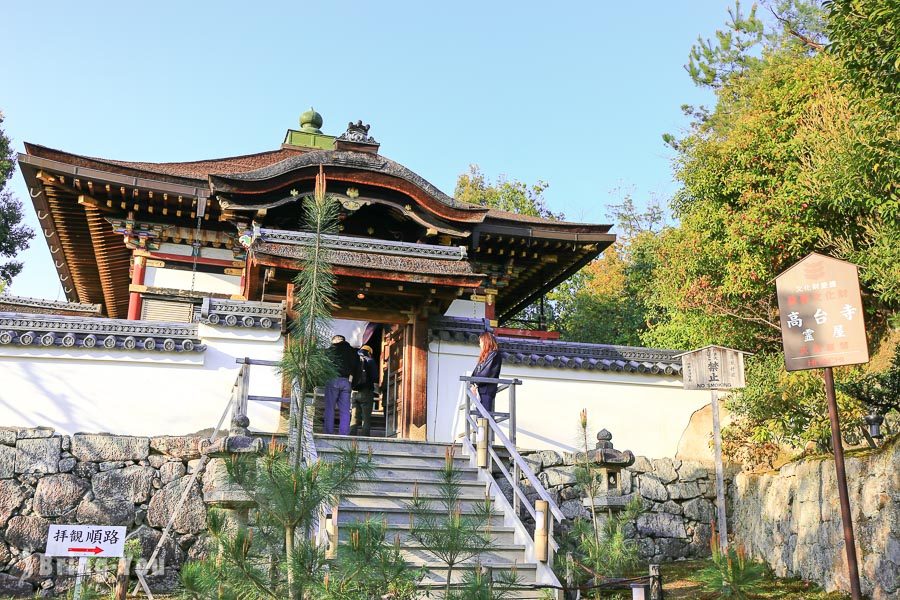
When I heard that Ning Ning was buried 200 meters under his wooden statue, I was quite surprised. I asked the tour guide if Hideyoshi was also buried here, and he started pointing in a certain direction, saying that Hideyoshi was buried at the top of the distant Amida Peak. I felt that the tour guide was really dedicated and wanted to tell me everything!
Umbrella Pavilion and Shower Pavilion
Above the spiritual house, there are two unique pavilions, the Umbrella Pavilion and the Shigure Pavilion. They were specially moved from Fushimi Castle during the construction of Kiyomizu Temple. They look similar to the thatched roof construction method I saw at Miyama Kayabuki no Sato.
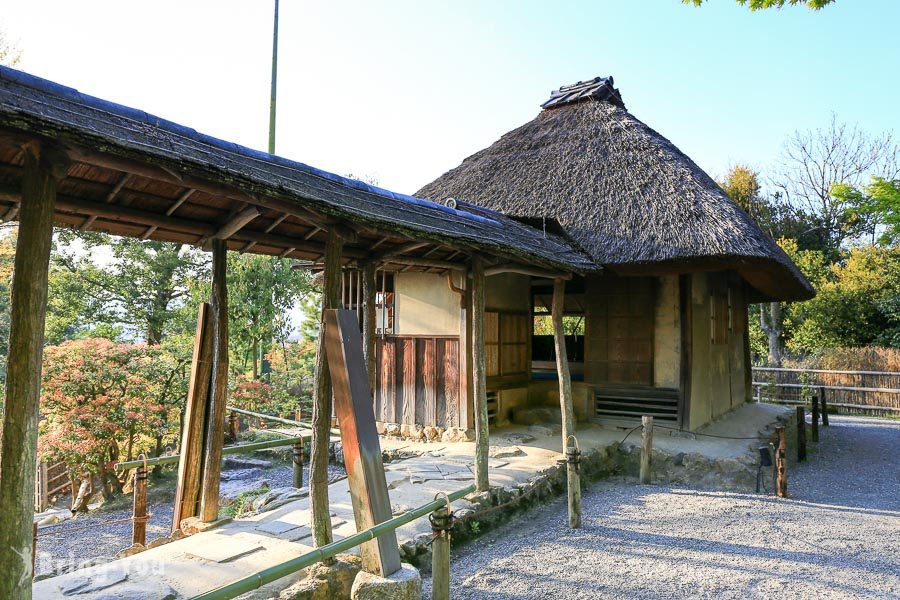
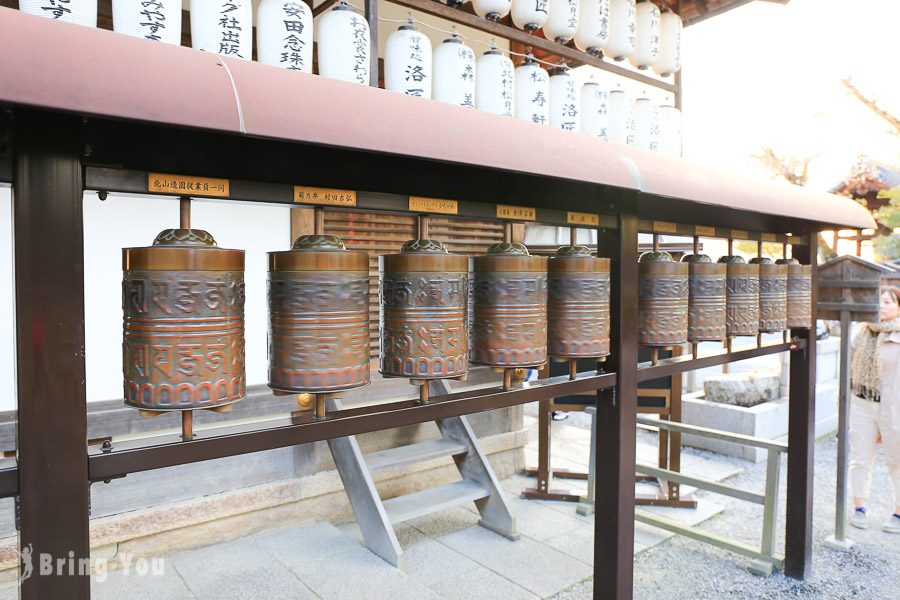
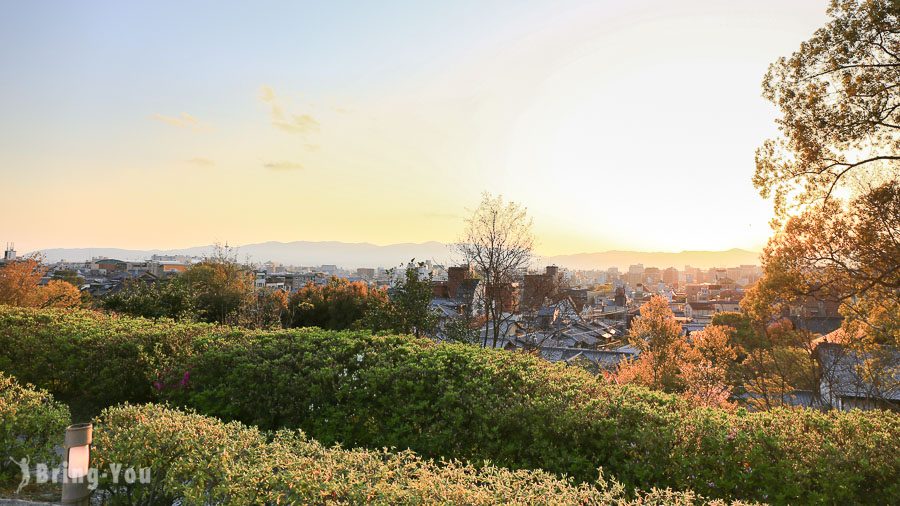
【Night Visit】Kodai-ji Temple Night Maple
Nighttime visitation hours: 9:00~22:00 (no clearing, last entry: 21:30)
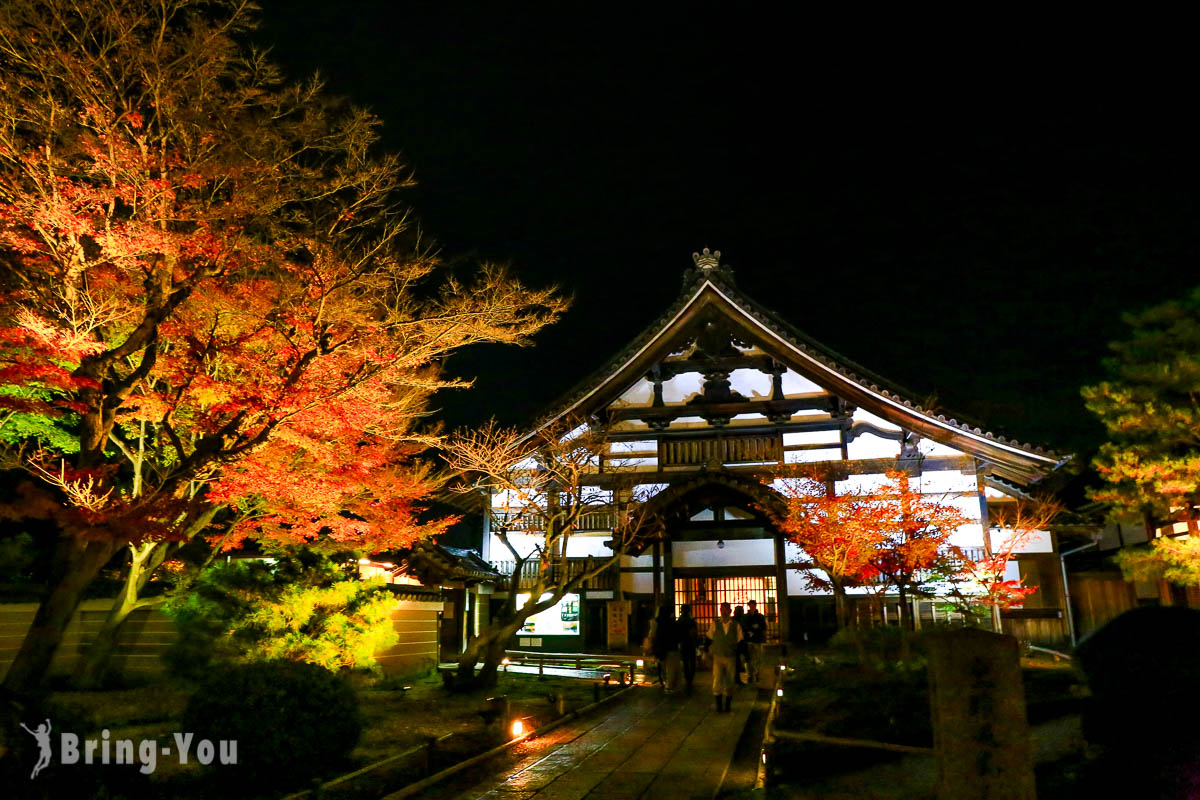
Visitors can also visit Kōtai-ji at night, and there is no clearing of the grounds. If you want to see the night maple leaves, you can come in the evening and stay until the light show at night. It is important to note that tripods are not allowed for photography, so please bring a good camera or enjoy the view with your own eyes.
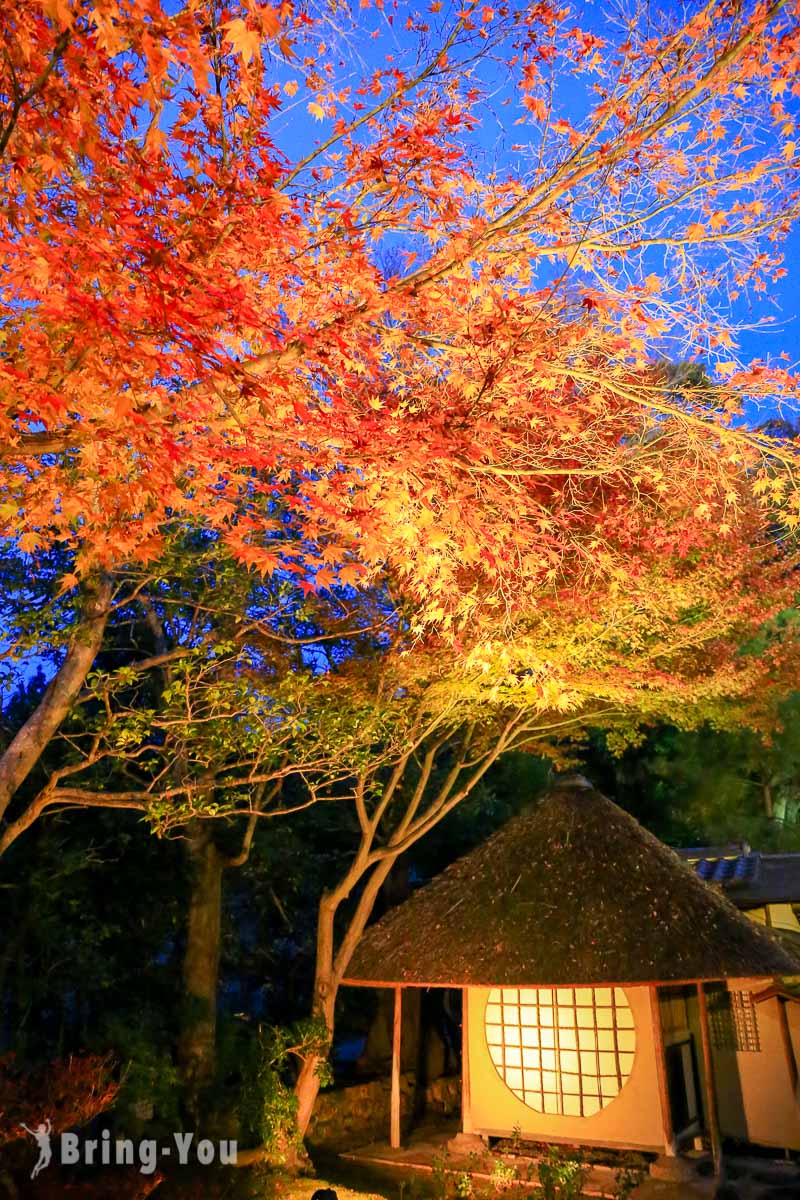
The most beautiful maple leaves at Kōtai-ji Temple are reflected in the waters of the Wǒ Lóng Pǒnd. However, it’s not easy to capture this scene as it only happens when there’s a warm winter. Don’t be disappointed if you miss it, as there’s also the dry landscape garden in front of the abbot’s quarters, which is illuminated with colorful lights during nighttime visits!
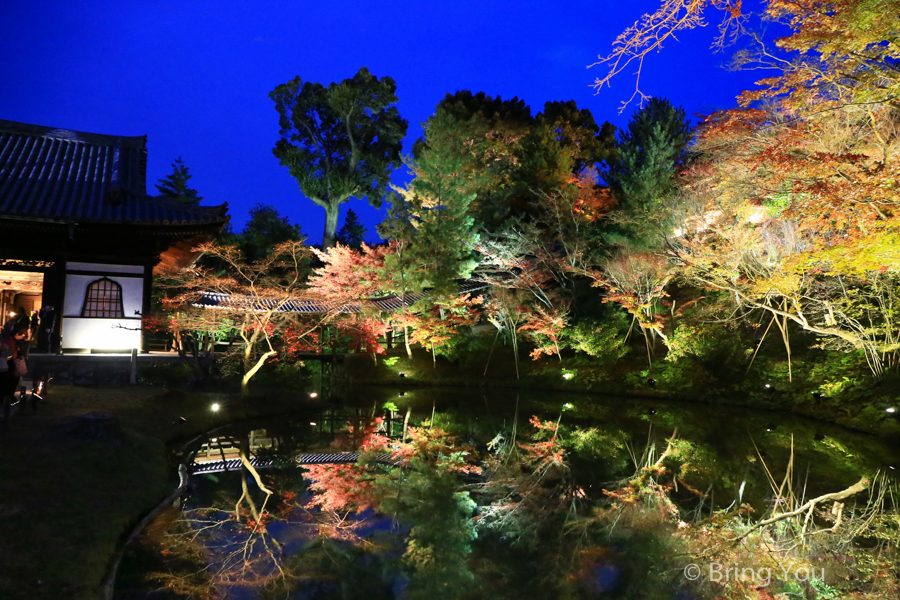
Attractions near Ginkaku-ji Temple
The location of Ginkaku-ji is in the heart of Kyoto’s popular tourist attractions. Why not plan a day trip to some of the surrounding areas?
- Must-See Sakura Queen in Spring: Maruyama Park: Gion Night Sakura, Gion Shidare Sakura
- Popular Love Shrine: Yasaka Shrine: Host of Japan’s Gion Festival!
- Popular Attractions: Gion Hanami-koji: Shopping and Restaurant Guide
- Shopping Hotspot: Sannen-zaka, Ninen-zaka, Sanjo-dori, Kiyomizu-zaka, and Yasaka-dori Old Streets Stroll
- Foodie Paradise: Nishiki Market Recommended Eateries and Kiyomizu-dera Introduction
Recommended Michelin three-star restaurants near Ginkaku-ji Temple
If you like traditional Kyoto cuisine, it is recommended to make a reservation in advance for the Kyoto ryotei “Kikunoi” next to Kiyomizu Temple, which has been awarded three Michelin stars every year. It is known as the cheapest Michelin three-star restaurant. The dining space is traditional Japanese tatami mats, and the restaurant uses “Kikusui well”, one of the seven famous waters of Kyoto. The eight-inch dish is like a work of art, delicate and refreshing, and the sashimi is incredibly fresh. Their kaiseki cuisine is suitable for gourmets who want to experience authentic Japanese cuisine in Kyoto.
Travel itinerary reference: 【Kiyomizu-dera One Day Trip】Explore all the Kyoto attractions around
